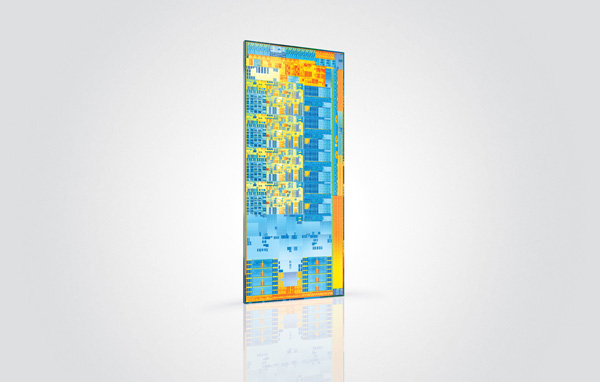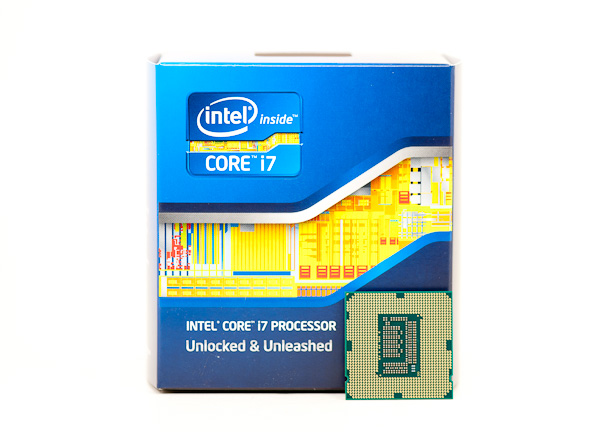The Intel Ivy Bridge (Core i7 3770K) Review
by Anand Lal Shimpi & Ryan Smith on April 23, 2012 12:03 PM EST- Posted in
- CPUs
- Intel
- Ivy Bridge
Final Words
Reviewing a tick in Intel's cadence is always difficult. After Conroe if we didn't see a 40% jump in a generation we were disappointed. And honestly, after Sandy Bridge I felt it would be quite similar. Luckily for Intel, Ivy Bridge is quite possibly the strongest tick it has ever put forth.
Ivy Bridge is unique in that it gives us the mild CPU bump but combines it with a very significant increase in GPU performance. The latter may not matter to many desktop users, but in the mobile space it's quite significant. Ultimately that's what gives Ivy Bridge it's appeal. If you're already on Intel's latest and greatest, you won't appreciate Ivy as an upgrade but you may appreciate for the role it plays in the industry—as the first 22nm CPU from Intel and as a bridge to Haswell. If you missed last year's upgrade, it'll be Ivy's performance and lower TDP that will win you over instead.
Intel has done its best to make this tick more interesting than most. Ivy Bridge is being used as the introduction vehicle to Intel's 22nm process. In turn you get a cooler running CPU than Sandy Bridge (on the order of 20—30W under load), but you do give up a couple hundred MHz on the overclocking side. While I had no issues getting my 3770K up to 4.6GHz on the stock cooler, Sandy Bridge will likely be the better overclocker for most.
With Ivy Bridge and its 7-series chipset we finally get USB 3.0 support. In another month or so we'll also get Thunderbolt support (although you'll have to hold off on buying a 7-series motherboard until then if you want it). This platform is turning out to be everything Sandy Bridge should have been.
Ivy's GPU performance is, once again, a step in the right direction. While Sandy Bridge could play modern games at the absolute lowest quality settings, at low resolutions, Ivy lets us play at medium quality settings in most games. You're still going to be limited to 1366 x 768 in many situations, but things will look significantly better.
The sub-$80 GPU market continues to be in danger as we're finally able to get not-horrible graphics with nearly every Intel CPU sold. Intel still has a long way to go however. The GPUs we're comparing to are lackluster at best. While it's admirable that Intel has pulled itself out of the graphics rut that it was stuck in for the past decade, more progress is needed. Ivy's die size alone tells us that Intel could have given us more this generation, and I'm disappointed that we didn't get it. At some point Intel is going to have to be more aggressive with spending silicon real estate if it really wants to be taken seriously as a GPU company.
Similarly disappointing for everyone who isn't Intel, it's been more than a year after Sandy Bridge's launch and none of the GPU vendors have been able to put forth a better solution than Quick Sync. If you're constantly transcoding movies to get them onto your smartphone or tablet, you need Ivy Bridge. In less than 7 minutes, and with no impact to CPU usage, I was able to transcode a complete 130 minute 1080p video to an iPad friendly format—that's over 15x real time.
While it's not enough to tempt existing Sandy Bridge owners, if you missed the upgrade last year then Ivy Bridge is solid ground to walk on. It's still the best performing client x86 architecture on the planet and a little to a lot better than its predecessor depending on how much you use the on-die GPU.
Additional Reading
Intel's Ivy Bridge Architecture Exposed
Mobile Ivy Bridge Review
Undervolting & Overclocking on Ivy Bridge
Intel's Ivy Bridge: An HTPC Perspective












173 Comments
View All Comments
bman212121 - Monday, April 23, 2012 - link
Does anyone know which motherboards are going to support VT-d? Is there a specific chipset you'll need to have or will it just be up to the vendor to decide?Thanks,
Bman
Magichands8 - Monday, April 23, 2012 - link
I feel so ambivalent about Intel's current strategy. I admit I really don't understand why laptops are moving ahead so significantly. Why on earth would someone want to buy a laptop to replace a home desktop system? And if they aren't doing that then how can Intel justify a move away from the high performance end of the spectrum? If you really need to do business work away from home AND away from work then I can see the need for the mobility that a laptop can provide but this focus on a gaming-centric platform so that people can one day soon play Crisis on their laptop at traffic stops on the way to work is utterly baffling to me. On the other hand, the process technology and architectural improvements we are seeing are amazing. It just burns me that performance for what I use a desktop for is essentially at a standstill now so that Intel can save this unfathomable laptop crowd a few watts during the occasional vacation. As it stands when I see a review like this at first I'm like "Oh wow!" and then I feel cheated for having waited for Intel's latest and greatest. Ivy Bridge-E and Haswell-E better be mind blowing or I'm going to be completely crestfallen at the direction that Intel is taking.Quantumbytes - Monday, April 23, 2012 - link
Intel is following a strategy that will in the end provide compute power for small and powerfull devices like cell phones, laptops, tablets, RFIDs, food and apparel tags, etc. They are looking at the big picture and the money is in the small designs. Desktops are a means to an end. Get used to the push to small and simple.JarredWalton - Monday, April 23, 2012 - link
Thanks for being an AMD apologist and reading with blinders. Trinity will probably maintain the GPU performance gap. Until Trinity arrives, however, IVB HD 4000 on laptops on average across 15 games is equal to Llano A8 on laptops.And what other things are people doing with graphics besides games? Video transcoding? Okay, there's one task. Name another that computer users do on a regular basis. [Crickets...]
So why is Intel putting so much effort into graphics? Because their business is to sell you a new microprocessor every 2-3 years if they can. With the ability to put 1.4 billion transistors into a 130mm^2 die, what else are they supposed to do? More cache? More CPU cores? You try to make the worst aspect of your product better, and then you market it to the masses. That's all that's really happening here.
frozentundra123456 - Monday, April 23, 2012 - link
Most Llano laptops I have seen are not even the A8 model, but mostly the A6, with somewhat lower graphics capabilities. So I think you are being very fair to AMD in comparing their top of the line graphics to HD4000, instead of the lower performance A6 graphics.André - Monday, April 23, 2012 - link
"Unfortunately at the time only Apple was interested in a hypothetical Ivy Bridge GT3 and rumor has it that Otellini wasn't willing to make a part that only one OEM would buy in large quantities. We will eventually get the GPU that Apple wanted, but it'll be next year, with Haswell GT3. And the GPU that Apple really really wanted? That'll be GT4, with Broadwell in 2014."Can't help but wonder were you got this tidbit from? :-)
Very interesting.
André - Monday, April 23, 2012 - link
D'oh ... spelling.Where you got the tidbit from even.
SC-D_E_A_T_H - Monday, April 23, 2012 - link
I'll be sticking with my AMD Sempron 3400+. A processing badass!DanNeely - Monday, April 23, 2012 - link
"How many enthusiasts who overclock their computers are going to be running them *at full load* 24/7? None. "I do. The 30W difference at stock would be ~$40/year directly (13c/kwh); and probably twice that indirectly since my LL pays for heat during the winter, but the AC bills all mine. Vs my current x58 boxes, probably another factor of 1.5-2x; although unless OC levels creep up over the next few months I'm tempted to just wait and hope haswell doesn't burn all its improvements on the IGP and lower TDP for mobile.
Malih - Monday, April 23, 2012 - link
Somehow I'm no longer hungering for the top performance CPU.CPU performance has somewhat exceed most people daily needs (and mine too), and mobile CPUs are more exciting today, especially if they can help the system to consume less battery and have better graphics. I think its now safe enough for manufacturer like for example Apple to go for Trinity instead of Ivy Bridge for their MB Air, provided Trinity can be made to consume minimal power.